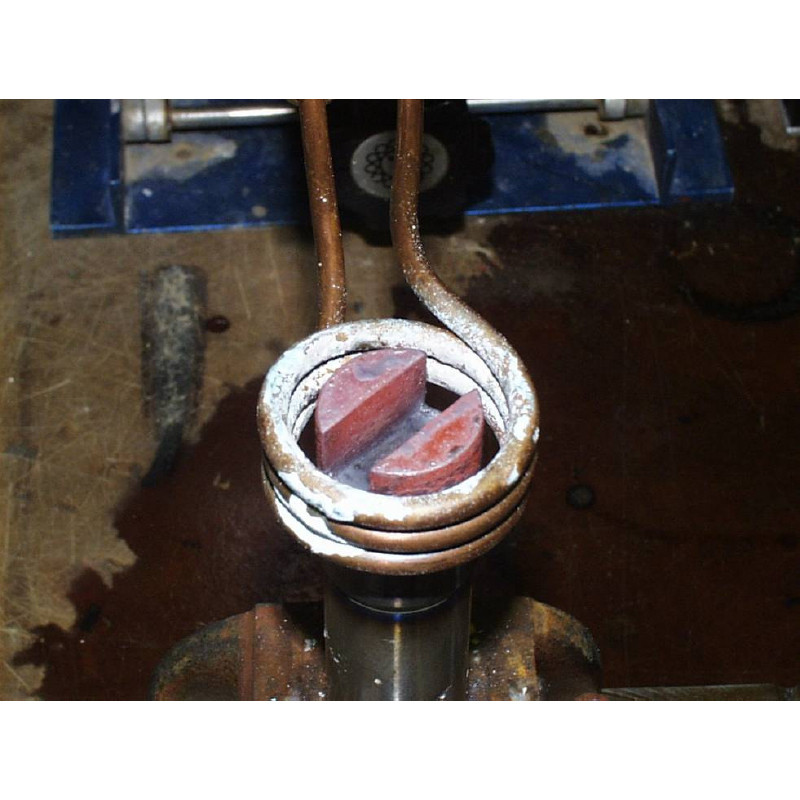

Debes estar logueado
Category


Las fotos son solo para fines informativos. Ver especificaciones de producto
please use latin characters
Objective: Annealing the end of a steel hydraulic motor shaft prior to machining.
Frequency: 259 kHz
Material: 0.75” (19mm) diameter steel rod, 6” (152.4mm) long with a keyway at the end.
Temperature: 1350 °F (732 °C)
A three turn helical coil is used for annealing the motor shaft. The end of the motor shaft is placed in the coil and power is applied for 20 seconds to reach 1350 ºF (732 ºC) and turn the steel red hot.
¿Estás interesado en este producto? ¿Necesita información adicional o precios individuales?
Usted debe estar conectado
Objective: Annealing the end of a steel hydraulic motor shaft prior to machining.
Frequency: 259 kHz
Material: 0.75” (19mm) diameter steel rod, 6” (152.4mm) long with a keyway at the end.
Temperature: 1350 °F (732 °C)
A three turn helical coil is used for annealing the motor shaft. The end of the motor shaft is placed in the coil and power is applied for 20 seconds to reach 1350 ºF (732 ºC) and turn the steel red hot.
Su agradecimiento a la reseña no pudo ser enviado
Reportar comentario
Reporte enviado
Su reporte no pudo ser enviado
Escriba su propia reseña
Reseña enviada
Su reseña no pudo ser enviada
